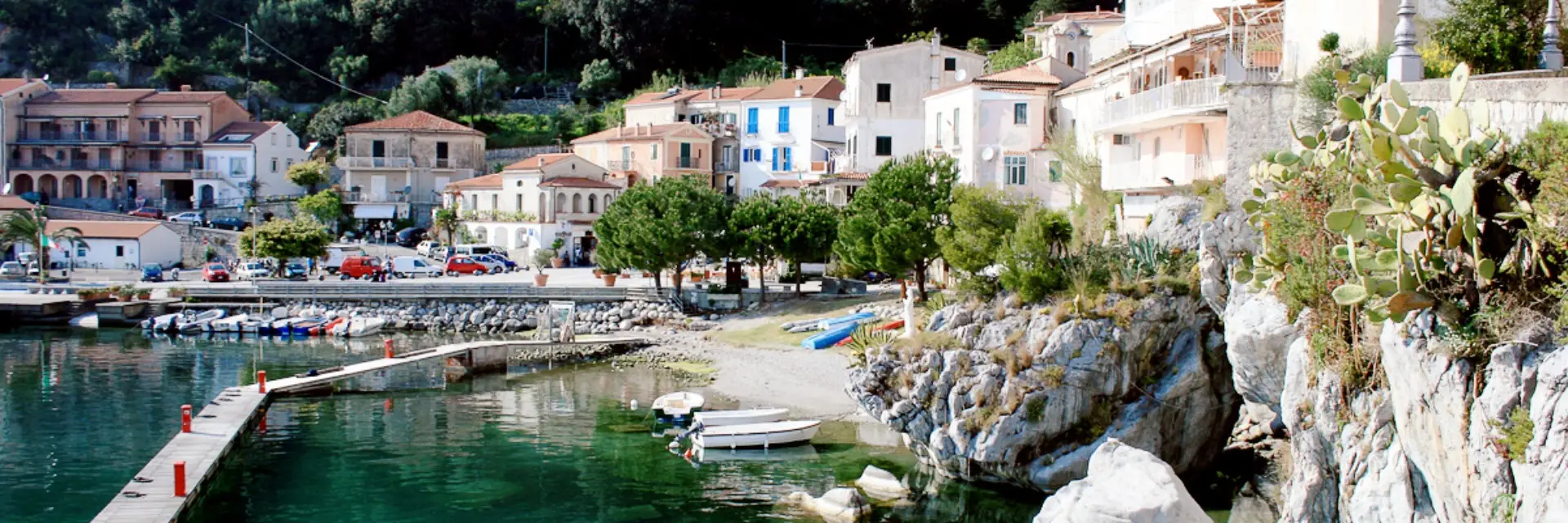
Boutique Hotels in Maratea
The setting is impressive: below steep wooded slopes, with sparkling glimpses of the sea through a steep pass, and high bare-ridged mountains stretching inland. The area around the town includes little beaches, a marina and a hill crowned by a giant statue of Christ.
A picturesque village with one or two rather smart places to stay, Maratea is both a simple and a refined holiday destination. The town's small size, steep slopes and distance above the sea mean it is unlikely ever to become a mass-tourism destination. It is a holiday spot for Italy aficionados, and for those in tune with the rich but slow pace of Italian life. Like the cave-town of Matera, Basilicata's other leading tourist destination, Maratea still has a real sense of history, and enterprising travellers will discover crumbling buildings and overgrown lanes where the smartening-up process hasn't yet reached.
Tourist sights and things to do
The best activities in Maratea are exploring the little lanes, and then sitting at an outdoor cafe in the charming main square, Piazza Buraglia, and watching the world go by. The town is attractive both by day and by night, and you can spend several hours wandering up and down narrow lanes discovering picturesque corners and sudden views. This is a good spot for photographers and for lovers of the little details of Italian life: crumbling grand archways, religious icons tucked into niches and grottoes, elderly locals exchanging gossip in the piazza and lazy resident cats dozing in alleys.
Maratea boasts that it is the town of 44 churches. The three well-kept churches near Piazza Buraglia, the Chiesa dell'Addolorata, the Chiesa dell'Immacolata and the Chiesa dell'Annunziata, are generally open and are worth visiting for their provincial artworks and an atmosphere which is both quaint and devout. They're all dedicated to the Virgin Mary in different roles. The most historically-important church, the Chiesa Madre (this one again dedicated to Santa Maria Maggiore), is further uphill, but, like the many smaller chapels and churches, you may not find it open. One of the most striking chapels, on a small street below the heart of town, is the Chiesetta del Calvario. In its facade is set a fresco of the Madonna and saints dating to 1548, and through an opening in the door it is possible to admire more attractive frescoes inside.
Piazza Buraglia is a quieter version of Capri's famous piazzetta; an elegant village square dotted with cafe tables. A narrow street connects it with Piazza Vitolo. Between the two squares are a variety of shops, two churches and a statue of the town's patron saint, San Biagio, on top of a column. Piazza Vitolo is almost as appealing as Piazza Buraglia. One side of the square is dominated by the stately town hall, and in the centre is an elegant fountain, unfortunately used as an occasional roundabout. A couple of restaurants look out on the square, with upstairs terraces from which you can enjoy the evening scene while eating.
Other sights to look out for while you are exploring the town are a set of frescoes in an open-air chapel near the Convento dei Cappuccini, several medieval towers and romantically ruinous buildings as well as temptingly-renovated ones. The oldest part of the town is on a knoll around and above the Chiesa Madre. You'll come across some very old doorways and buildings in this part of Maratea, including the oldest church, the eleventh-century Chiesa di San Vito, which lies along an overgrown path by the woods.
Maratea has a small town museum (Museo Comunale), although it does not have regular opening times all-year-round. If you are interested in visiting, ask advice at your hotel or the tourist office as it may be possible to visit on request, with advance notice. The contents include various exhibits related to the local area, including Roman anchors and other finds from the Isola di Santo Ianni. The Isola is a tiny island close to the coast near Maratea, which appears to have been used by the Romans as a trading anchorage and for the production of garum, the fish sauce they loved. Ruins, jars, and many anchors have been found here by archaeologists and divers.
The biggest events in Maratea are celebrations for San Biagio, which take place in May, and a summer programme of events which range from a jazz concert to food tastings.

